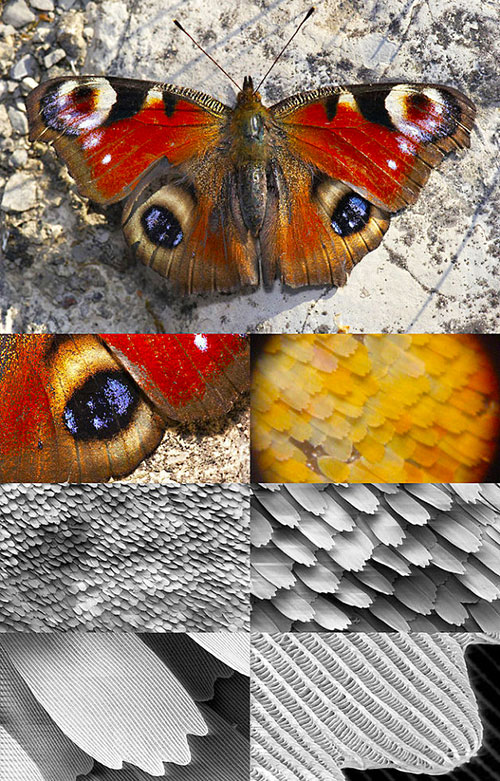(Lawrence Berkeley National Lab: Berkeley, CA) -- A butterfly’s wings and a peacock’s feathers use nanoscale architecture to bend light and produce brilliant colors without pigments or dyes, and scientists have been trying to emulate nature’s design.
|
ADVERTISEMENT |
Now, scientists from mixed reality technology company Magic Leap Inc., working with researchers at the Department of Energy’s Lawrence Berkeley National Laboratory (Berkeley Lab), have developed new, versatile ways to control and enhance the light-bending properties of synthetic optical nanostructures. Magic Leap’s technology creates visualizations that allow virtual imagery to coexist and interact with a viewer’s actual surroundings in real time.
|
A collage of images showing butterfly wings at different magnifications. (Credit: Wikimedia Commons) |
…


Add new comment